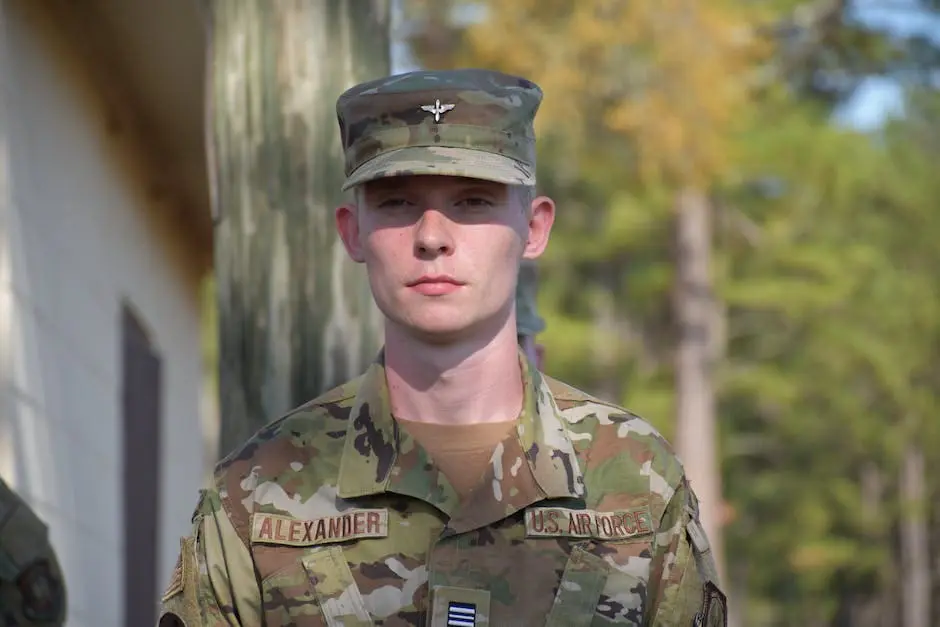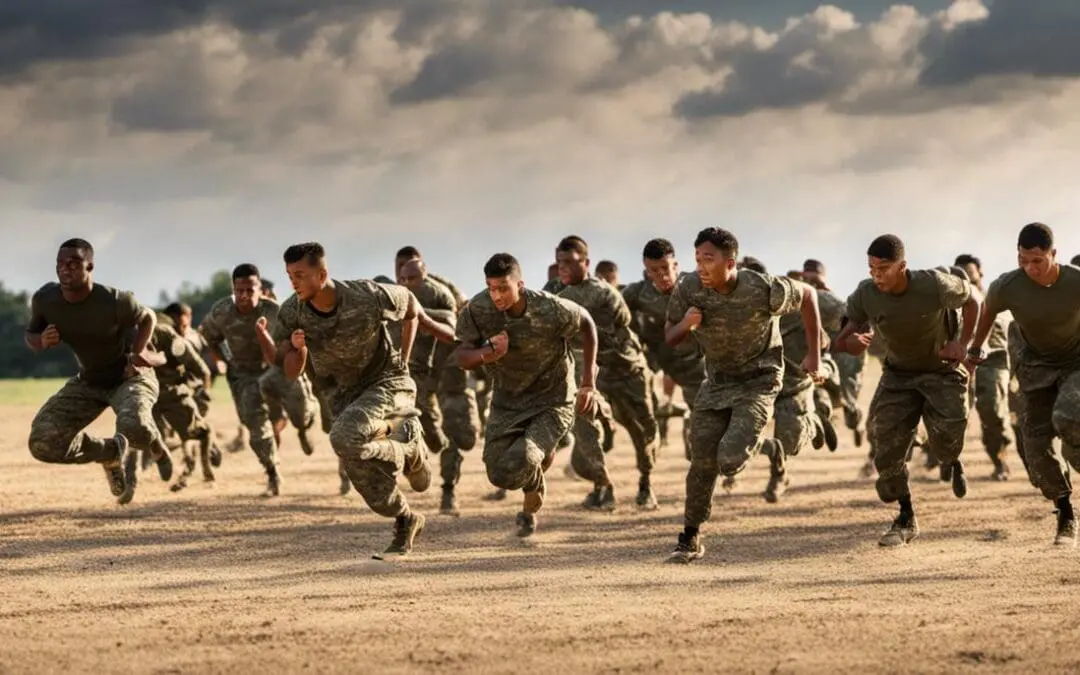Preparation for the demands of Army boot camp requires a multifaceted approach, extending far beyond physical fitness. It involves arming oneself with knowledge about the fundamentals of warrior skills, understanding the importance of the Chain of Command, and embedding the Army’s values and ethics deeply into your psyche. Equally crucial is mental preparedness, learning to manage stress, fear, and anxiety as you step into this challenging yet rewarding phase of your life. Embarking on this transformative journey requires thorough understanding and consistent effort. Be ready to embrace this rigorous training that shapes civilians into U.S soldiers, capable of serving and protecting their nation.
Physical Fitness
Understanding Basic Training
The US Army’s basic training, also known as boot camp, is a rigorous test of physical endurance spanning a period of around 10 weeks. The purpose of basic training is to transform recruits into competent and combat-ready soldiers. It is a physically demanding program that calls for extensive preparation.
US Army’s Physical Fitness Test Standards
The army uses a specific physical fitness test to measure the fitness levels of its recruits. This test includes three core exercises: running, push-ups, and sit-ups. The standards vary by age and gender with the max for men under 30 being 71 push-ups, 78 sit-ups, and a 2-mile run under 13 minutes, while women under 30 are expected to complete at least 42 push-ups, 78 sit-ups, and a 2-mile run in under 15:36.
Commence a Physical Fitness Regimen
Start training as early as possible prior to boot camp to adapt your body to the intense physical demands it will encounter. Focus on the three exercises of the fitness test.
-
Run:
Start running at least 3-4 times a week. Begin with shorter distances and gradually increase them to reach and surpass the 2-mile requirement. Week by week, try decreasing the time it takes for you to complete the distance.
-
Push-Ups:
Commence a plan that includes push-ups daily or several times a week. Start with a number you can comfortably manage and incrementally add more repetitions as you get stronger. Ideally, aim to exceed the army’s maximum expectation to give yourself a cushion during the actual test.
-
Sit-Ups:
Use the same progressive method with sit-ups, starting with a comfortable number and slowly increasing. Practice the correct form, which is lying on your back with your knees bent, feet flat on the floor, and your hands behind your head. Sit up and touch your elbows to your knees, then return to the start position.
Training Guidelines
In addition to the exercises, ensure to take care of your overall wellbeing. Hydrate and get adequate rest in between workout days to allow your body to recover. Consult with professionals or seasoned trainers for workout strategies and tips, and ensure to have regular health check-ups to prevent overstraining and injuries.
Finally, progressive training is key. Ensure to slowly increase your workouts’ intensity rather than immediately engaging in high-intensity regimens. This will help condition your body more effectively and minimize the risk of injuries. A disciplined approach to your fitness regimen will better prepare you for the physical exertions expected at army boot camp.

Photo by santoelia on Unsplash
Basic Warrior Skills
Understanding Tactical Communications
Tactical communication in the army refers to the coordination and dissemination of information between soldiers during field operations. This mainly involves learning and understanding US military phonetic alphabet, hand signals, and radio protocols. The US military uses a specific phonetic alphabet – Alpha for A, Bravo for B, and so on – to clearly communicate words and avoid misinterpretation. Hand signals are also essential in scenarios where radio communication is not possible or advised. Understanding these signals lets you communicate silently with your team. Lastly, learn the basic rules for radio communication, including proper etiquette and speaking format.
First Aid Procedures
First aid knowledge saves lives on and off the battlefield. To prepare, you should familiarize yourself with the basics of Combat Lifesaver (CLS), a program that aims to provide every soldier with fundamental life-saving medical skills. The main focus of this program is the immediate response to bleeding, including how to apply tourniquets and packing wounds. Additionally, you should learn how to recognize and respond to signs of shock and respiratory distress. It’s also important to know how to carry an injured person without causing further injury.
Map Reading
Map reading and land navigation are fundamental to any military operation. The ability to read and understand topographic maps is crucial. You should be familiar with the symbols and colors used in these maps: blue for water, brown for contour, green for vegetation, etc. You should also understand grid coordinates, which will help you in pinpointing exact locations. Lastly, familiarize yourself with the cardinal directions and learn how to determine these using a compass.
Land Navigation
Land navigation is a critical component of any field operation. Begin with simple orienteering skills, such as learning how to use a compass and coordinate it with a map. Understand the terms like azimuth (a cardinal direction on a compass), back azimuth (the opposite direction of an azimuth), and magnetic declination (the difference between magnetic north and true north). Familiarize yourself with pace counting, a method used to estimate the distance you’ve traveled on foot. Lastly, learn about different terrain features and how they’re depicted in maps. This includes ridges, valleys, depressions, and spurs. It’s also beneficial to practice these skills in an outdoor setting when it’s safe to do so.

Understanding Chain of Command
Understanding the Chain of Command
In the U.S. military, the chain of command is a hierarchical structure that dictates authority, decision-making, and communication. This system of rules involves orders descending from higher-level officials, like generals or admirals, trickling down to lower-level enlisted soldiers or sailors. As an eco-system, the chain of command is vital for the smooth functioning of military operations.
Exploring Different Ranks
Before you enter the boot camp, invest time to research the varied ranks in the military branch you’ll be enlisting in, whether it’s the Army, Navy, Air Force, or Marine Corps. Familiarize yourself with the ranks and their corresponding insignia. Understanding the order of ranks from lowest to highest helps recognize where you fit in the chain of command. Enlisted ranks generally start at “Private” in the Army and Marine Corps or “Seaman Recruit” in the Navy and go up to “Sergeant Major” or “Master Chief Petty Officer.” Officer ranks typically start at “Second Lieutenant” or “Ensign” and rise to “General” or “Admiral.”
Roles and Responsibilities
Each rank in the military carries its unique responsibilities. Generally, enlisted personnel carry out the primary tasks and frontline duties, while officers are responsible for leadership, planning, and decision-making. As an example, a sergeant in the Army is expected to lead a squad and ensure the wellbeing and training of the soldiers under their command, while an officer such as a Captain is responsible for a company and its strategic operations.
Appropriate Addressing
Learning how to address military personnel of different ranks is part of respecting the chain of command. For officers, it is appropriate to use their rank and last name (e.g., Captain Smith). For enlisted personnel, their rank, or simply ‘sir’ or ‘ma’am’ may be used depending on the military branch’s customs and traditions.
Hierarchy Adherence
Adhering to the hierarchy is a personal responsibility that each service member must shoulder. Everyone in the military, irrespective of the rank, is expected to respect those above them in the chain of command and to execute their orders dutifully and faithfully. This helps maintain discipline and unit cohesion, which is critical for success in military missions.
By understanding the chain of command, you’ll be demonstrating one of the cornerstones of military life — respect for authority. Mastering this concept will place you in a good standing when you enter boot camp and begin your military career. Remember, the chain of command is not just about knowing who is in charge, it’s about understanding your place within the larger system and how you can contribute to its success.

Army Values and Ethics
Army Ethic: Professional Conduct and Selfless Service
The Army Ethic is the heart of the United States Army and serves as the foundation of all decisions and actions taken by its soldiers. This ethic, which encapsulates the moral principles that guide the Army profession, puts at its core the mandate to serve the nation’s people. The Ethic comprises legal and moral standards, fostering trust among soldiers, Army civilians and Army families. In essence, the Army Ethic embodies the idea of professional conduct and selfless service, whereby soldiers pledge to protect the constitution, the American people, and the nation.
The Seven Core Army Values
The Army’s values form the backbone of a soldier’s character and are built into the training and everyday experiences of those who serve. These seven core values are: Loyalty, Duty, Respect, Selfless Service, Honor, Integrity, and Personal Courage (usually acronymized as LDRSHIP). Each of these values sets a standard for behavior within the ranks, regardless of location, mission, rank, or duty.
Loyalty: Unwavering Dedication
As an integral part of the Seven Core Army Values, Loyalty signifies an unwavering dedication to the nation, the U.S. Army, and other soldiers. Loyalty includes following orders dutifully and remaining devoted to the tasks at hand. From standing up for your fellow comrades in difficult times to safeguarding sensitive information, loyalty is an essential attribute that the Army cherishes.
Duty: Fulfilling Responsibilities
Duty in the Army calls for each soldier to fulfill their professional, legal, and moral obligations to the best of their abilities, both on and off duty. This could range from taking responsibility for tasks and actions to stepping in for a comrade if required, and tirelessly ensuring all duties are accomplished to the best of their ability.
Respect: Embracing Differences and Equality
Respect is viewed by the Army as treating others with dignity and worth, exactly as one would like to be treated. This value acknowledges the importance of embracing diversity and equality, fostering an environment that respects individual dignity, and nurturing a positive and healthy working atmosphere among comrades.
Selfless Service: Putting the Welfare of the Nation ahead
One of the key Army values is Selflessness. This value underscores the importance of putting the needs of the nation, Army, and fellow soldiers before one’s personal interests. This can recognize a soldier’s willingness to make personal sacrifices for the good of others, with no expectation of reward or recognition.
Honor: Upholding the Army’s Values
Honor is a matter of carrying out, acting upon, and living the seven Army values in every aspect of life. It means taking pride in one’s achievements and those of their fellow soldiers, it involves standing by decisions that are hard but right, and living up to the moral code of conduct.
Integrity: Moral and Ethical Code
The Army defines Integrity as doing what is right legally and morally. A soldier demonstrates integrity by maintaining a high standard of honesty, fairness, and ethics, always doing and saying what is correct despite the circumstances and potential consequences.
Personal Courage: Facing Fear, Danger, or Adversity
Army value of Personal Courage includes both physical and moral courage. It urges soldiers to face fear, danger, or adversity, in both physical and moral contexts. It takes courage to stick by a challenging decision, to follow commands under fire, or to report unethical behaviour.
In sum, these seven values—Loyalty, Duty, Respect, Selfless Service, Honor, Integrity, and Personal Courage—provide the foundation for the behaviors and attitudes expected from every soldier in the U.S. Army. All these values hold the same importance, and adhering to them will be instrumental in a successful military career.

Mental Preparedness
Recognizing the Mental Challenge
The mental challenge of Army boot camp is a constant, and often under-discussed, facet of the military lifestyle. The emphasis on physical fitness and skill development is only part of the equation. Mental resilience is also put to the test. It is important to understand this from the outset and be prepared to face it head-on.
Developing Mental Resilience
One of the first steps in preparing mentally for boot camp is understanding the importance of mental resilience. This can be defined as the ability to adapt and cope with stress and adversity. Developing this characteristic requires an ongoing commitment to positive self-talk and managing your emotional responses. When faced with an adversity, remind yourself that you’ve tackled difficult situations before and you can do it again.
Stress Management Techniques
Effective stress management is one of the key areas to focus on when preparing for boot camp. Techniques such as mindfulness, which involves paying attention to the present moment without judgment, can help you handle stressful situations that may arise during boot camp. Regular exercises to help manage stress include deep breathing, meditation, and visualization exercises. Practice these techniques regularly before boot camp to prepare your mind for the pressures you’ll face.
Coping with Fear and Anxiety
Coping with fear and anxiety is another crucial aspect of mental preparedness for boot camp. Fear and anxiety can be managed by using techniques such as controlled breathing, progressive muscle relaxation, and Cognitive Behavioral Therapy (CBT). CBT is a technique that helps you understand how your thoughts affect your feelings and behaviours. It encourages you to challenge negative thoughts and replace them with more positive or realistic ones.
Building Healthy Relationships
A boot camp is not a solitary endeavor. You’ll be part of a team, and your mental health can greatly influence how well you blend in and perform as a group. So, it is fundamental to develop excellent interpersonal skills, empathy, and the ability to give and accept constructive criticism. Work on forging healthy relationships and effective communication with the people around you.
Overall Consistency in Practice
The main thing to remember about preparing for the mental challenges of boot camp is consistency. Incorporate mindfulness, stress relief techniques, relationship-building tasks, and other mental exercises into your daily routine and gradually build up your mental endurance. Remember, mental resilience, just like physical strength, builds over time with repeated practice and determination.

As your journey draws near to Army boot camp, remember that it is a balance of physical, mental, and ethical preparedness. You might discover hidden potentials, face unexpected challenges, or further solidify your commitment to Army values and ethics. Nurturing a profound understanding of the chain of command and mastering basic warrior skills can set a sturdy foundation for your military future. With a robust fitness regimen, a deep understanding of Army procedures, strong adherence to the Army Ethic, and well-equipped mental fortitude, you step closer to success at boot camp, ready to serve with honor, dignity, and excellence.


